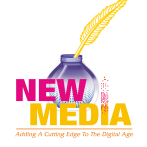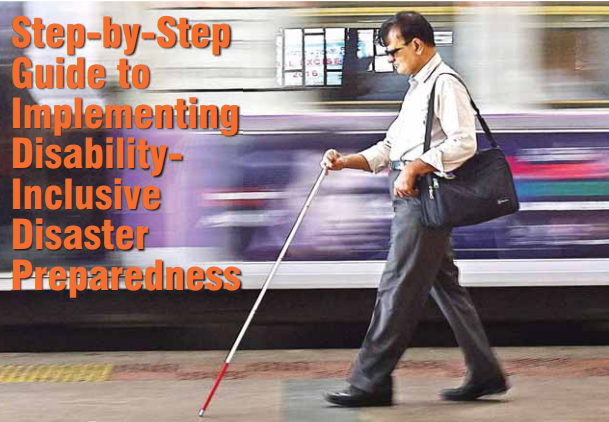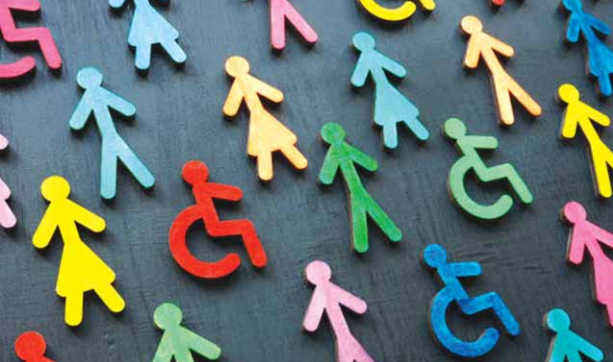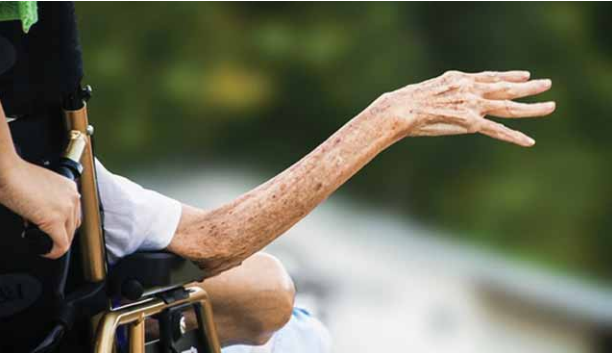Disasters impact everyone — but preparedness isn’t always equal. Persons with disabilities often face unique barriers during emergencies, from inaccessible evacuation routes to communication gaps in early warnings. Building a truly inclusive disaster preparedness plan means addressing these challenges head-on, ensuring no one is left behind when crisis strikes.
This guide breaks down the process step-by-step, offering practical strategies for governments, organizations, and communities to create disability-inclusive disaster plans. From risk assessment to community engagement, each step is designed to foster resilience, empower individuals, and build safer, more inclusive environments for all. Let’s get started on a preparedness journey where accessibility is at the heart of every action.
Disaster preparedness is crucial for protecting communities, but for people with disabilities, it often falls short without specific efforts to include them. This guide simplifies the process for organizations and individuals, offering clear steps to ensure everyone is safe during emergencies. It draws on best practices and real-world examples to make disaster planning inclusive and effective.
Steps for Implementation
Here’s how to get started, step by step:
• Assess and Plan: First, understand the needs of people with disabilities in your community. Conduct surveys, involve them in planning, and update existing plans to address gaps.
• Develop Inclusive Plans: Create emergency plans with accessible communication (like sign language, braille), evacuation routes, and shelters that work for all.
• Train and Educate: Train emergency responders on assisting people with disabilities and educate the community using accessible formats.
• Ensure Accessible Infrastructure: Make sure evacuation routes, shelters, and facilities are physically accessible, following universal design principles.
• Build Support Networks: Pair individuals with volunteers for help during crises and collaborate with disability organizations.
• Provide Resources: Offer toolkits like P-CEP to help individuals create personal plans and build emergency kits tailored to their needs.
• Monitor and Evaluate: Regularly review plans, conduct drills with people with disabilities, and learn from feedback to improve.
Unexpected Detail – An unexpected detail is that global statistics show 85% of people with disabilities don’t participate in community disaster planning, yet 57% are willing to, highlighting a significant opportunity for engagement.
Introduction- Disasters, whether natural or man-made, pose significant risks to all members of society, but people with disabilities often face disproportionate challenges due to barriers such as inaccessible infrastructure, lack of tailored communication, and insufficient support systems. According to the World Health Organization (WHO), approximately 16% of the global population lives with some form of disability, with 80% residing in low- and middle-income countries. Research indicates that persons with disabilities are two to four times more likely to die or be injured in disasters compared to those without disabilities, underscoring the urgent need for disability-inclusive disaster preparedness strategies. This survey note provides a comprehensive, step-by-step guide for organizations and individuals to implement such practices, drawing on best practices, real-world examples, and detailed resources to ensure inclusivity in disaster management.
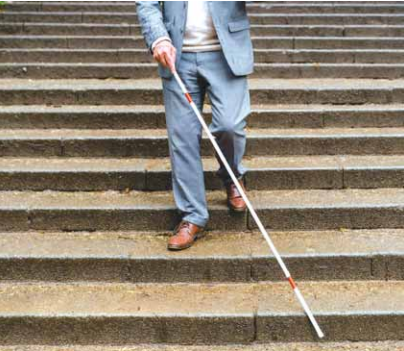
Background and Context
Disability-inclusive disaster preparedness involves ensuring that all phases of disaster management—preparedness, response, recovery, and mitigation—are accessible and considerate of the diverse needs of people with disabilities. The importance of this approach is highlighted by global statistics, such as a UN survey indicating that 85% of people with disabilities report no participation in community-level disaster risk reduction (DRR) decision-making, yet 57% are willing to participate, and 84% lack personal preparedness plans. This gap presents a significant opportunity for engagement and improvement.
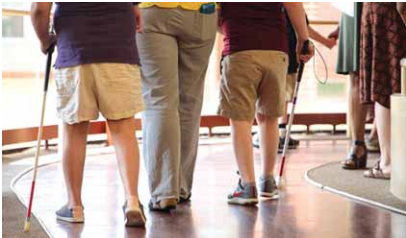
Step 1: Assessment and Planning
The foundation of any effective disaster preparedness strategy is a thorough assessment of the community’s needs, particularly those of people with disabilities. This step involves:
• Conducting a Needs Assessment: Identify the types and prevalence of disabilities in your community. This can be done through surveys, interviews, or by consulting with local disability organizations. Key questions to ask include:
o What are the common types of disabilities in the community (e.g., mobility, visual, hearing, cognitive)?
o What specific challenges do people with disabilities face during disasters (e.g., inaccessible evacuation routes, communication barriers)?
o What resources and support systems are currently available, and where are the gaps?
For example, in Queensland, Australia, a study involving 66 people with disabilities revealed that many lacked formalized emergency plans, highlighting the importance of structured involvement in preparedness efforts.
• Involving Stakeholders: Engage people with disabilities, their families, and representatives from disabled people’s organizations (DPOs) in the planning process. Their firsthand experience is invaluable for understanding real needs and ensuring that plans are practical. The PrepareCenter recommends mapping existing networks and DPOs to support their involvement in community planning activities, coordinating across sectors to avoid mixed messages, and reviewing plans with national authorities and disability stakeholders.
• Reviewing Existing Plans: Examine current disaster preparedness plans to identify gaps in inclusivity. Update these plans to incorporate the needs of people with disabilities, ensuring that all aspects—from early warning systems to recovery efforts—are accessible. This might involve revising communication strategies, evacuation procedures, and shelter designs, as suggested by the International Disability Alliance’s project on “Putting Persons with Disabilities at the Centre of Disaster Preparedness and Response.”
Step 2: Developing Inclusive Emergency Plans
With a clear understanding of the community’s needs, develop emergency plans that are specifically designed to be inclusive. Use multiple channels to disseminate information, such as social media, television, radio, and community networks, to reach as many people as possible. The American Red Cross offers specific tips for different disabilities, such as including weather radios with text displays for the deaf and hard of hearing, or Braille labels for the blind and low vision.
What is Accessible Communication: Ensure that all disaster-related information is available in formats accessible to people with different disabilities. This includes:
• Sign language interpreters for the deaf and hard of hearing
• Braille and large print materials for the visually impaired
• Audio announcements for those with visual impairments
• Simple language and visual aids for people with cognitive disabilities
• Evacuation Procedures: Plan evacuation routes and methods that accommodate people with mobility impairments, visual or hearing disabilities, and other conditions. This may involve:
o Providing accessible transportation, such as vans equipped with ramps
o Training assistants to help with evacuation
o Designating alternative evacuation points that are accessible
FEMA’s press release on “Disaster Preparedness for People with Disabilities” suggests planning ahead for accessible transportation for evacuation or getting to a medical clinic, working with local services, public transportation, or paratransit.
Staff at shelters should be trained to assist people with disabilities and understand their specific needs, such as medication management or communication methods. The PrepareCenter recommends ensuring shelters adhere to accessibility guidelines, aligning with Article 9 of the UN Convention on the Rights of Persons with Disabilities.
• Assistive Devices: Plan for the availability of assistive devices such as wheelchairs, hearing aids, and communication boards in emergency situations. Encourage individuals to include spare batteries, chargers, and other essentials in their personal emergency kits, as suggested by FEMA, including tips for mobility disabilities like having a lightweight manual chair as backup for power wheelchairs.
Step 3: Training and Education
Training is crucial for both emergency responders and the community at large to ensure that everyone knows how to include people with disabilities in disaster preparedness and response. Key areas include:
• Disability Awareness: Educate responders on the diverse needs of people with disabilities and how to provide appropriate assistance. This includes understanding different types of disabilities and the use of assistive devices. For example, responders should know how to operate a wheelchair or communicate with someone who uses sign language.
Practical Skills for Responders: Train responders on how to:
• Evacuate people with mobility impairments
• Communicate with those who are deaf or hard of hearing
• Provide support to individuals with cognitive disabilities, such as keeping them calm and oriented.
• Community Education: Conduct workshops and information sessions for the general public on how to include people with disabilities in neighbourhood preparedness plans. Encourage the formation of support networks where able-bodied individuals commit to assisting neighbours with disabilities during emergencies. Use accessible formats for all educational materials to ensure everyone can participate.
The Person-Centred Emergency Preparedness (P-CEP) toolkit includes resources for training and education, emphasizing person-cantered approaches that focus on individuals’ capabilities and support needs, as detailed on the Collaborating4Inclusion website.
Step 4: Implementing Accessible Infrastructure
Physical accessibility is vital for ensuring that people with disabilities can evacuate safely and access services during disasters. Steps include:
• Evacuation Routes: Ensure that all evacuation routes are free of barriers and have features like:
o Tactile paving for the blind
o Clear signage with large print and symbols
o Adequate lighting and contrast for visibility
• Shelters and Facilities: Design or retrofit shelters and other facilities to be fully accessible, following universal design principles. This includes:
o Accessible entrances and exits
o Restrooms with grab bars and roll-under sinks
o Sleeping areas with adequate space for wheelchairs
o Communication systems like intercoms with volume control
• Public Transportation: Coordinate with public transportation services to ensure that accessible vehicles are available for evacuation and that drivers are trained to assist passengers with disabilities. In some regions, like Florida, there are special needs registries where individuals can register to receive assistance during disasters, ensuring that their needs are known in advance, as noted on the FEMA website.
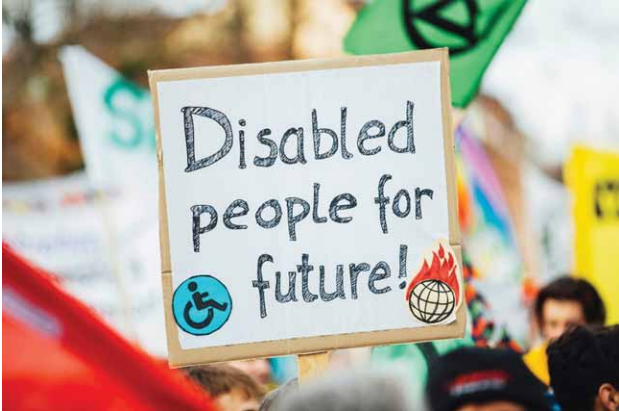
Step 5: Establishing Support Networks
Support networks can significantly enhance the safety and well-being of people with disabilities during disasters. Organizations can facilitate this by:
• Buddy Systems: Pair individuals with disabilities with volunteers who commit to checking on them and providing assistance during emergencies. For example, a neighbour might agree to help someone with a mobility impairment get to a safe location.
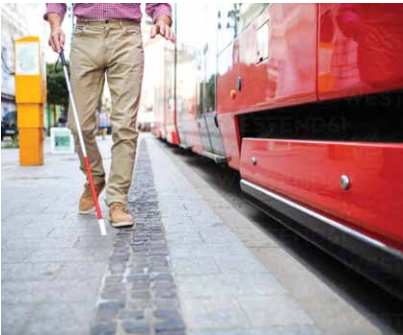
• Community Mapping: Create maps of the community that highlight locations of people with disabilities, accessible routes, and resources, while respecting privacy. This can help responders quickly locate and assist those who need help, as suggested by FEMA’s recommendation to inform a support network where emergency supplies are.
• Collaboration with DPOs: Work closely with disability organizations to leverage their expertise and networks in preparedness efforts. DPOs can provide valuable insights into the needs of their members and help disseminate information effectively, as recommended by the PrepareCenter.
In the P-CEP approach, individuals are encouraged to identify their support networks and include them in their personal emergency plans, ensuring that everyone knows their roles and responsibilities, as detailed on the Collaborating4Inclusion website.
Step 6: Providing Resources and Toolkits
Make available resources that help individuals with disabilities prepare for disasters. This includes:
• Personal Emergency Plans: Encourage the use of toolkits like P-CEP, where individuals can create their own plans tailored to their needs. The P-CEP workbook guides users through assessing their preparedness, identifying support needs, and developing a personal emergency plan, as described on the Collaborating4Inclusion website.
• Emergency Kits: Provide guidance on what to include in emergency kits, considering specific needs like:
o Medications and medical supplies
o Assistive devices and spare parts
o Communication tools, such as TTY devices or communication boards
o Personal care items, like incontinence supplies or specialized food
FEMA suggests including daily used items and specific supplies for emergencies, with tips for different disabilities, such as extra hearing-aid batteries for the deaf and hard of hearing.
• Information Dissemination: Distribute information about disaster risks, preparedness steps, and available resources in accessible formats. This can be done through websites, social media, community meetings, and partnerships with local media, as recommended by the CDC’s Emergency Preparedness and Disability Inclusion resources.
The Ready Now! Emergency Preparedness Tool Kit from OHSU is another example of a resource designed specifically for people with disabilities, offering plain-language guidance on creating emergency plans, as noted on their website.
Step 7: Monitoring and Evaluation
Regularly review and update preparedness plans to ensure they remain effective and inclusive. This involves:
• Feedback Mechanisms: Establish channels for people with disabilities to provide feedback on the effectiveness of preparedness measures. This can be done through surveys, focus groups, or advisory committees composed of individuals with disabilities, as suggested by the PrepareCenter’s emphasis on continuous improvement.
• Drills and Exercises: Conduct regular drills that include people with disabilities to test plans and identify areas for improvement. For example, simulate an evacuation and assess whether all participants, including those with disabilities, can safely reach the designated shelter, as recommended by FEMA’s exercise tools.
• Lessons Learned: After each disaster or drill, document what worked well and what didn’t. Use this information to refine future plans. For instance, if communication barriers were identified during a drill, take steps to improve accessible communication methods. Post-disaster evaluations can reveal gaps in accessibility or communication that need to be addressed, as seen in the aftermath of Hurricane Katrina, where many people with disabilities were unable to evacuate due to lack of accessible transportation, leading to changes in evacuation policies.
Statistical Insights and Global Context
Globally, statistics reveal significant gaps, with 85% of people with disabilities not participating in community disaster management processes, as per UNDRR (2013), yet 57% are willing to, highlighting a significant opportunity for engagement. In Australia, the 2019 University of Sydney study’s findings align with international trends, showing the need for consistent standards and inclusion, as there are currently no nationally consistent standards to ensure access and inclusion of people with disability in disaster risk reduction.
Implementation Gaps and Way Forward
Challenges include the lack of formalized plans, as most participants in the University of Sydney study reported plans “in their heads,” not practiced or communicated. To address these, stakeholders must:
• Prioritize disability-specific training and tools, like the P-CEP workbook.
• Increase involvement of people with disabilities in planning, ensuring their voices shape strategies.
• Enhance community awareness and support networks to prevent isolation during disasters.
Conclusion Implementing disability-inclusive disaster preparedness is a multifaceted process that requires commitment from all stakeholders. By following these steps—assessment and planning, developing inclusive plans, training and education, implementing accessible infrastructure, establishing support networks, providing resources, and monitoring and evaluation—organizations and individuals can ensure that disaster preparedness efforts are truly inclusive. The key is to involve people with disabilities at every stage, recognizing their expertise and ensuring that their voices shape the strategies designed to protect them. Through collaborative effort and continuous improvement, we can build communities that are resilient for all.
